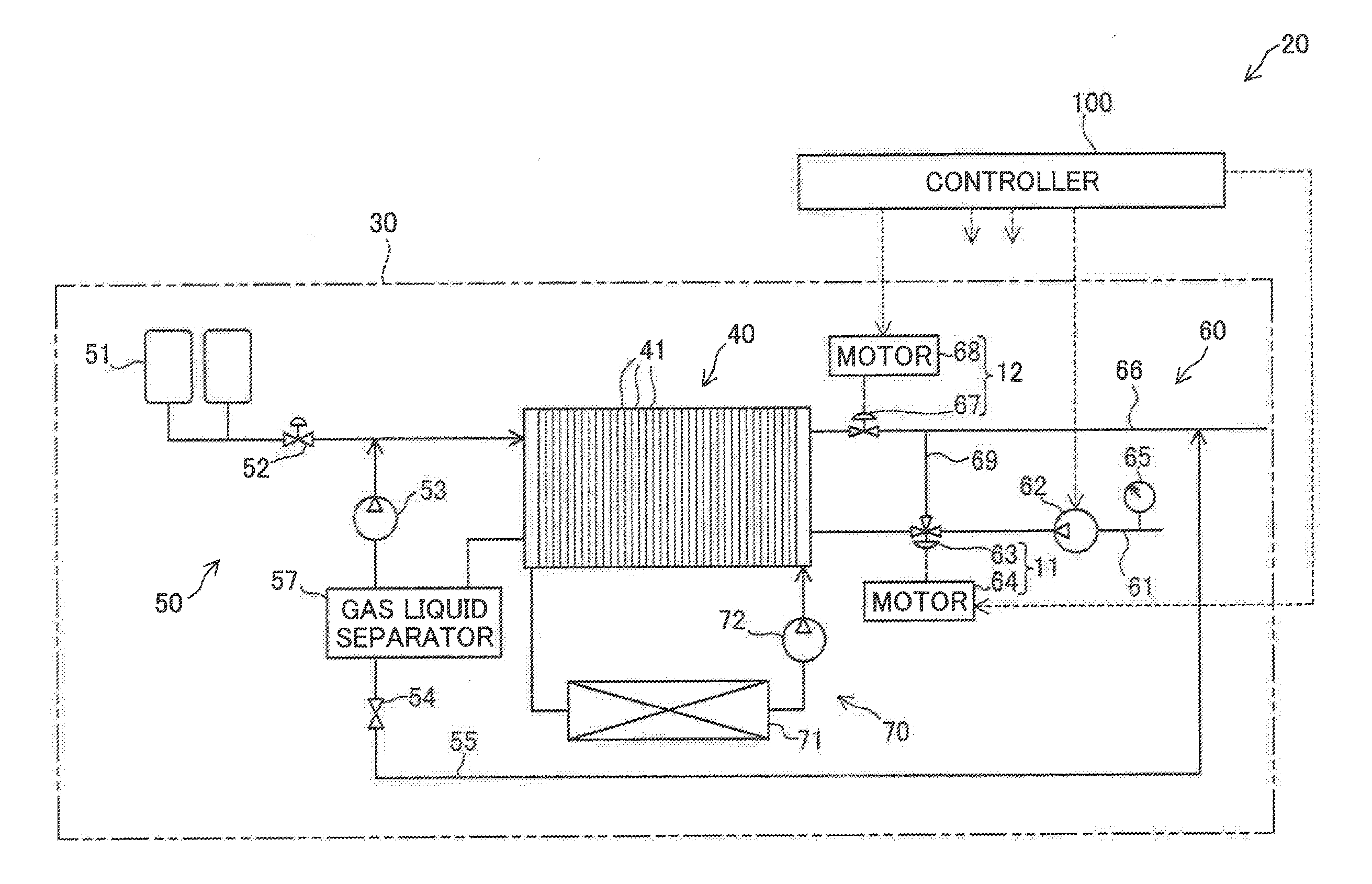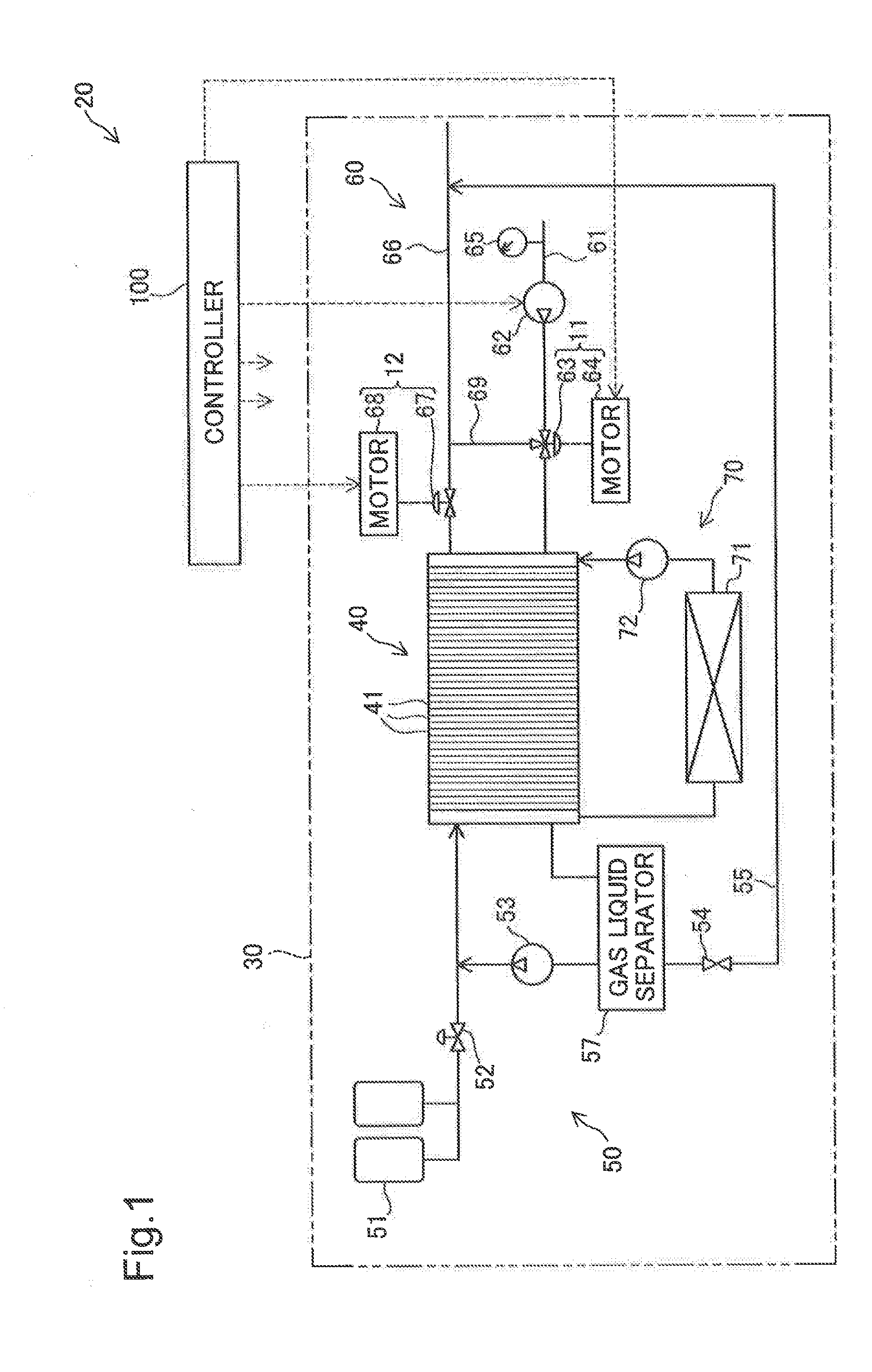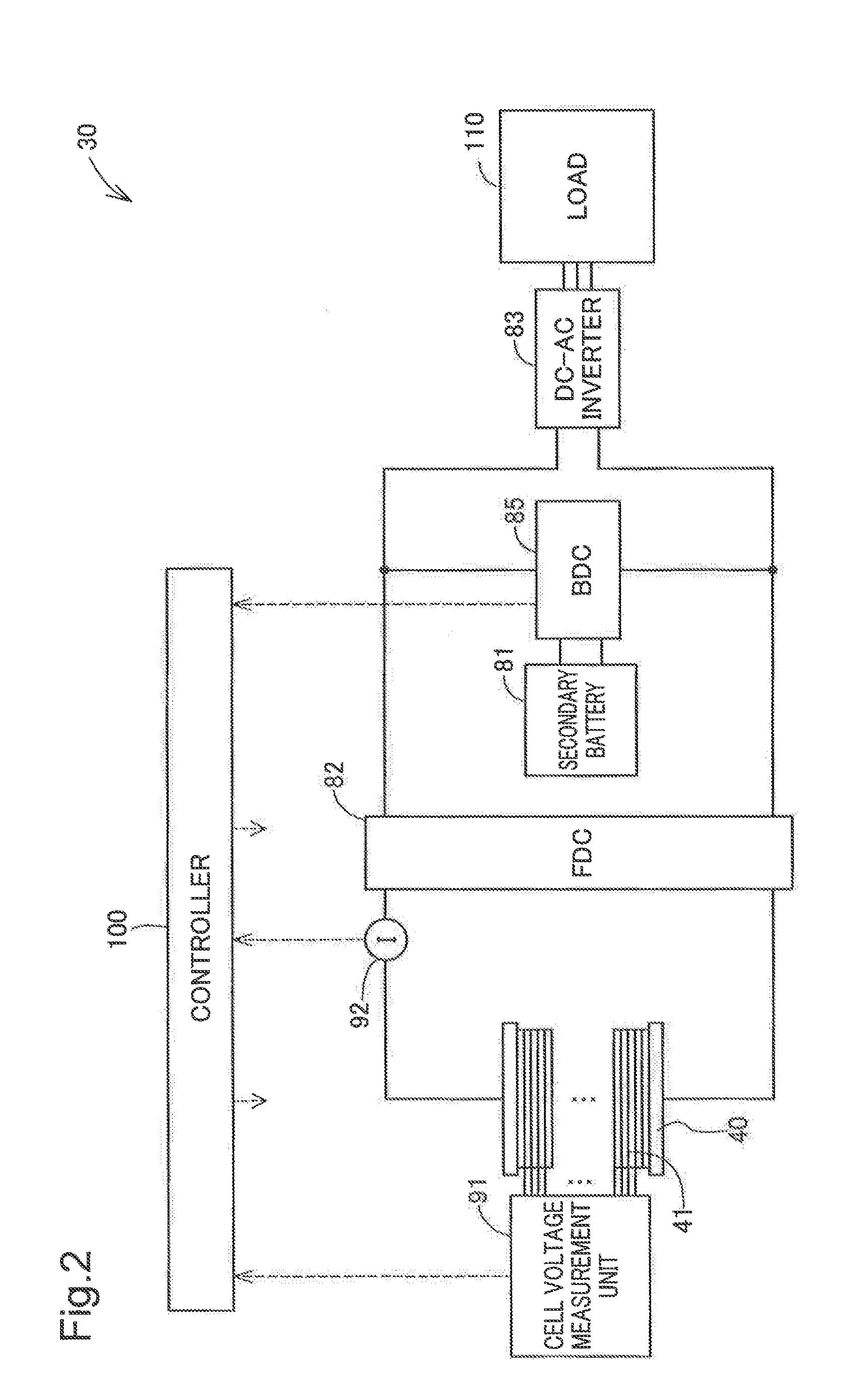Fuel cell system
a fuel cell and system technology, applied in secondary cells, battery/fuel cell control arrangement, battery servicing/maintenance, etc., can solve the problems of difficult to open the valve in the frozen state, interfere with the start of the fuel cell system, and simple valve-opening and valve-closing operations are unlikely to eliminate the frozen state. , to prevent the state of charge of the secondary battery from being excessively decreased, the effect of increasing the pressure in the supply flow path
- Summary
- Abstract
- Description
- Claims
- Application Information
AI Technical Summary
Benefits of technology
Problems solved by technology
Method used
Image
Examples
Embodiment Construction
[0030]FIG. 1 is a block configuration diagram illustrating the schematic configuration of a fuel cell vehicle 20. The fuel cell vehicle 20 is a four-wheel vehicle and includes a fuel cell system 30 as shown in FIG. 1.
[0031]The fuel cell system 30 employs polymer electrolyte fuel cells to generate electric power by the reaction of hydrogen with oxygen. As shown in FIG. 1, the fuel cell system 30 includes a fuel cell stack 40, a hydrogen supply discharge mechanism 50, a cathode gas supply discharge mechanism 60, a cooling water circulation mechanism 70 and a controller 100.
[0032]The fuel cell stack 40 is provided by stacking a plurality of unit cells 41. Each unit cell 41 includes an anode, a cathode, an electrolyte membrane and separators. In the description hereof, the anodes of the plurality of unit cells 41 are collectively referred to as “anode”, and the cathodes of the plurality of unit cells 41 are collectively referred to as “cathode”.
[0033]The hydrogen supply discharge mechan...
PUM
| Property | Measurement | Unit |
|---|---|---|
| temperature | aaaaa | aaaaa |
| power | aaaaa | aaaaa |
| torque | aaaaa | aaaaa |
Abstract
Description
Claims
Application Information
 Login to View More
Login to View More - R&D
- Intellectual Property
- Life Sciences
- Materials
- Tech Scout
- Unparalleled Data Quality
- Higher Quality Content
- 60% Fewer Hallucinations
Browse by: Latest US Patents, China's latest patents, Technical Efficacy Thesaurus, Application Domain, Technology Topic, Popular Technical Reports.
© 2025 PatSnap. All rights reserved.Legal|Privacy policy|Modern Slavery Act Transparency Statement|Sitemap|About US| Contact US: help@patsnap.com



